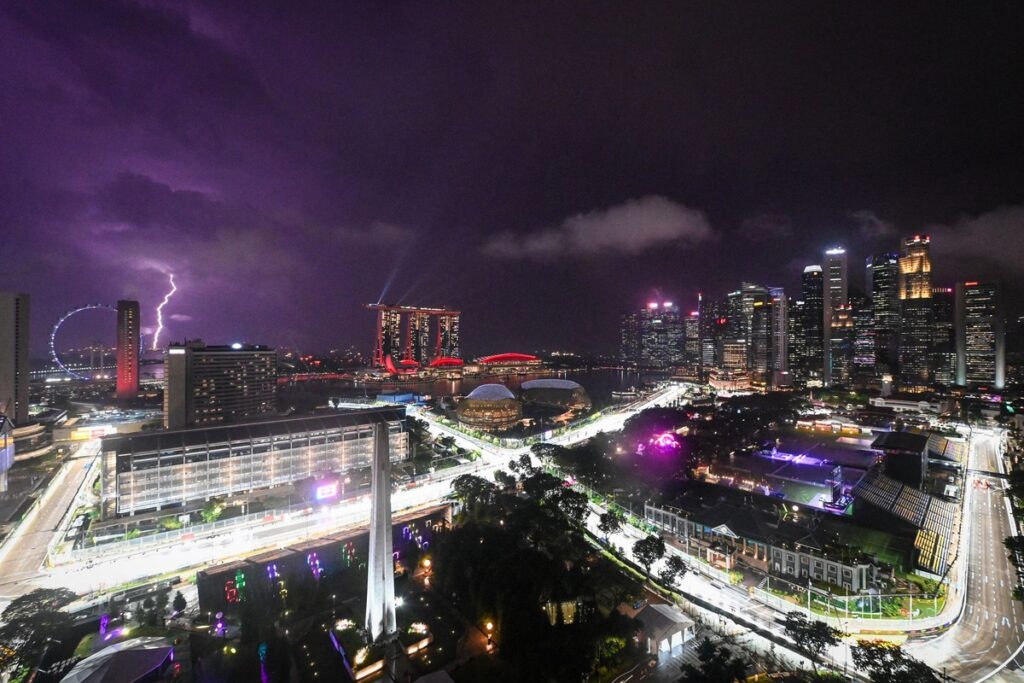Singapore has long been the most physically taxing Formula 1 race of the year thanks to a combination of a challenging stop-start circuit and high levels of heat and humidity. Now this year’s weekend in the city-state has become the subject of F1’s official Heat Hazard.
The ambient temperature is expected to reach 31C on both Saturday and Sunday, which is the FIA’s threshold for declaring a Heat Hazard. Race director Rui Marques notified the teams of this on Thursday.
Now the teams have two options: either their drivers must wear the mandatory cooling vests or their cars must carry more ballast.
Whether the drivers elect to use the vests or not, the rules state that their cars must be fitted with the necessary equipment to make the vests work – specifically the pumps, coolant reservoir and heat exchanger.
Any driver then choosing not to wear a vest must carry additional ballast.
The rules on this are clear: “The difference in mass between the driver’s personal equipment normally used and any items of a driver’s personal equipment that form part of the system must be compensated by the fitting of 0.5kg of ballast in the cockpit.”
Fernando Alonso, Aston Martin F1 Team, Charles Leclerc, Scuderia Ferrari, Franco Colapinto, Williams Racing, on the grid
Photo by: Mark Sutton / Motorsport Images
Initially the cooling vests were meant to be mandatory in the event of ambient temperatures reaching 31C but, after testing, several drivers complained that they were uncomfortable. The vests carry a network of tubes through which a coolant flows, but this naturally makes an already tight F1 car cockpit a more cramped environment.
For this reason the FIA decided to give drivers the option of not wearing one, creating the ballast rubric in order for those availing themselves of the system not to have a weight penalty.
The cooling vest system was developed after the controversial 2023 Qatar Grand Prix, where extreme heat left several drivers requiring medical attention.
Variants of this technology have been used in sportscar racing for many years but drivers are still wary of the weight and comfort penalty – or put off by stories of heat exchangers failing, resulting in the hapless pilots essentially cooking sous vide.
George Russell was the first to use the current generation of cooling vests in F1, trialling the system in this year’s Bahrain Grand Prix. He credited it not only with improving his comfort in the desert heat, but also with maintaining the mental sharpness needed to drive around a major electrical problem on his way to a remarkable second-place finish.
“Of course there’s always room to improve,” he said afterwards.
“But for us as a team, they’ve been putting in so much hard work and had the confidence that the system would work that I wanted to give it a whirl. So far, so good.”
We want to hear from you!
Let us know what you would like to see from us in the future.
Take our survey
– The Autosport.com Team
Read the full article here

